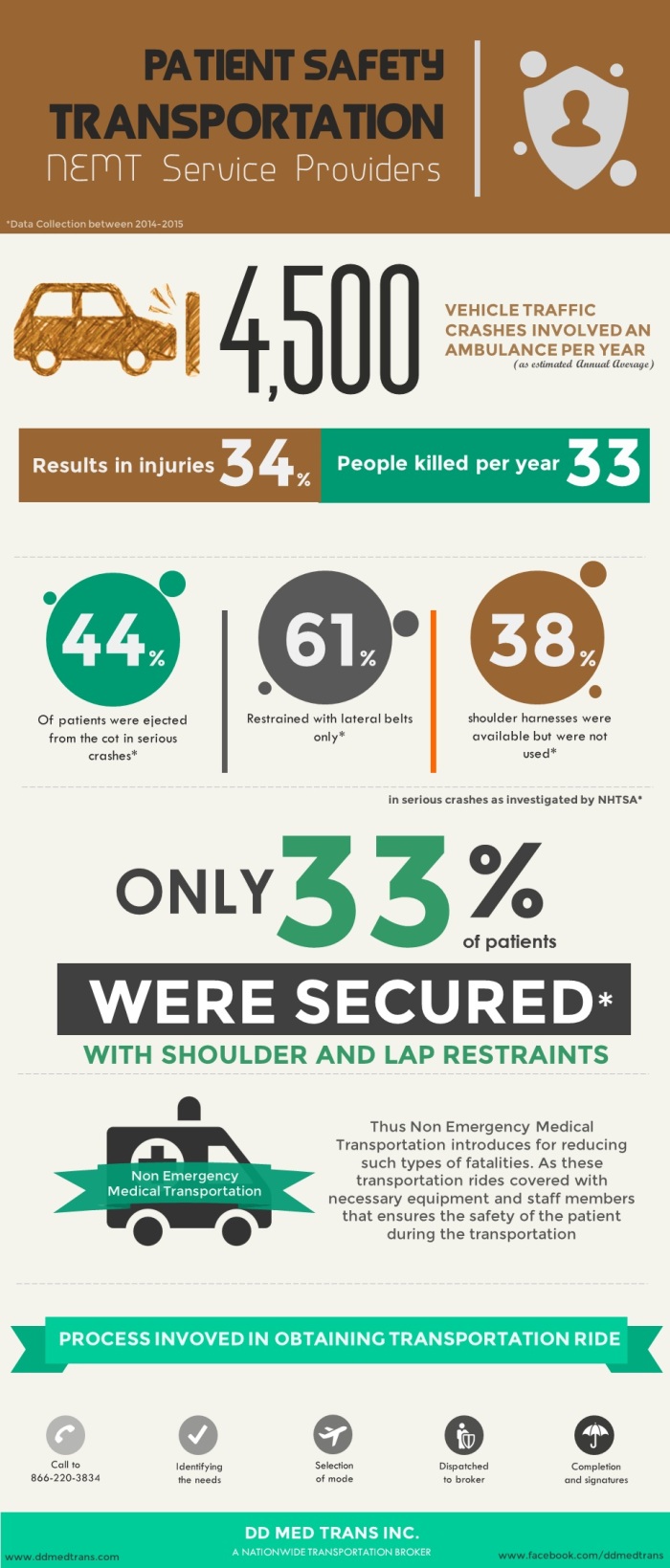Patient safety is one of the most important aspects of healthcare industries. This is needed to be taken care during the transportation rides. However, the quality and safety issues relating to the Patient’s Safety Transportation are not well designed as per specifies under the various health care acts.
Much attention has been focused on the Emergency Medical Transportation (EMS) services, where Non-Emergency situations are neglected for paying attention. However, a large percentage of patient transportation are of non-emergency natures such as attending family occasions, Doctor’s appointments, Home Care Support, Adult Care, Assisted Living, and so on. And reports recommended that these non-emergency transportation requirements going to be increased at significant levels. For Example, in 2007-2008, Australian government spent $2 billion on patient safety transportation, which denotes an annual increase of 8.5%. This rises is the increased of various health care requirements of patients for accessing the appropriate services.

#Fact: 4,500 vehicle traffic crashes involved an ambulance per year as estimated annual average. Out of which 34% injured and approximately 33 persons died.
Patients, many of whom are seriously and/or chronically (but not critically) ill, have needs similar to those of emergency patients, in terms of requiring the appropriate equipment, staff and support during transportation. As to manage and prevent some awkward and uncertain moments such as accidental falls etc.
Thus, Non-Emergency Medical Transportation services introduce for reducing such types of fatalities. As these transportation rides covered with necessary equipment and staff members that ensure the safety of the patient during the transportation and also do provides effective support and assistance to the patient.


